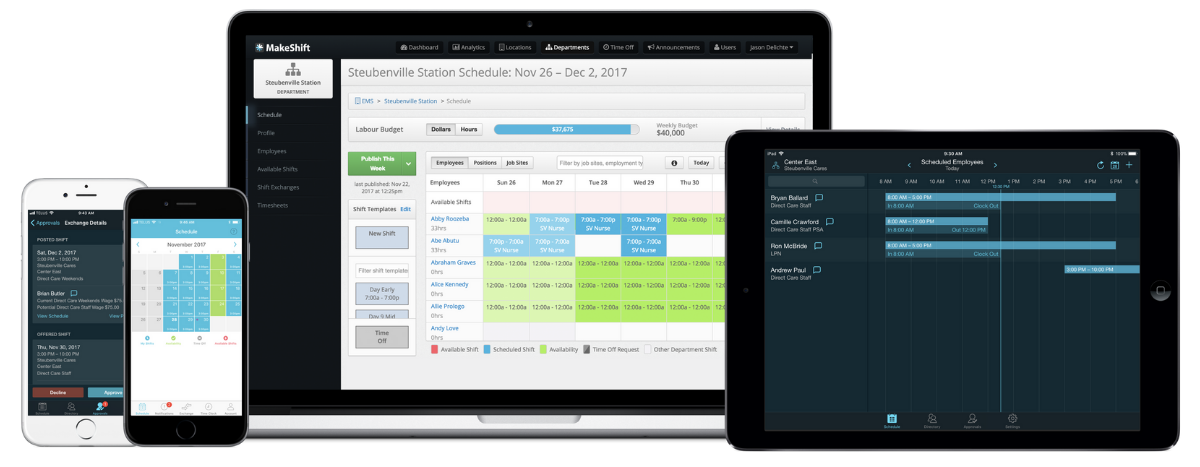Workforce optimization is more than a business buzzword — it’s an essential tool for any organization that wants to maximize the efficiency and effectiveness of its human resources.
Optimizing your workforce ensures your employees are working in the most productive and efficient ways possible.
This can help boost your business's overall profitability and improve employee morale, retention, and satisfaction.
Additionally, workforce optimization can help you accurately forecast growth, identify opportunities to improve performance and create a more cohesive team environment.
Today we’ll cover the following:
- What Is Workforce Optimization?
- 4 Telltale Signs You Need To Improve Your Workforce Optimization
- 5 Steps To Implement Workforce Optimization
- How Technology Can Improve Your Workforce Optimization
- Workforce Optimization Is Your Key To Success
What Is Workforce Optimization?
Workforce Optimization (WFO) is a term for a set of strategies that help you improve employee productivity, efficiency, and your business’ performance, usually through integrated software solutions.
When your business grows, it’s tempting to jump on the “more” bandwagon — more employees and processes.
But you’d be wise to slow your roll and put WFO to work for you instead.
Workforce optimization embodies working smarter, not harder, which often translates into doing MORE with LESS.
WFO is an overall business approach that involves strategizing and streamlining to help you run your business efficiently, effectively, and harmoniously.
It involves understanding your employees' skills and knowledge, availability, and workload.
It also entails evaluating processes to identify areas that need improvement to ensure the most effective use of your resources.
Workforce optimization combines high-level human resources and cutting edge technology to streamline workflows and improve team cohesiveness.
It’s not a one-time effort but rather an ongoing process of assessing, adjusting, and improving your workforce to strive for maximum balance, efficiency and productivity.
4 Telltale Signs You Need To Improve Your Workforce Optimization
It’s important to gauge your employees' happiness, productivity, and the efficiency of your business operations to analyze where you need improvement.
Since the COVID pandemic began, 66% of companies expanded the use of collaboration tools, and 53% increased their use of digital channels.
If you’re not sure whether you need to improve your workforce optimization, check for these 4 signs that’ll give you a read on what’s going on in your business.
1. Disengaged Employees
Do you know how to spot a disengaged employee? Here are some characteristics to watch for in your staff:
- Slow work tempo
- Easily distracted
- Does the bare minimum
- Unproductive
Once you recognize the signs, you need to find the root of the problem.
For example, employee disengagement can result from:
- Lack of Communication — If your employees feel out of the loop, they won’t feel like they matter. Consider improving team communication through technology — scheduling software that allows team communication can be a big help here.
- Burnout — Employees who work excessive overtime can end up burned out, negatively impacting their health and your retention rate.
- Low Employee Satisfaction — If your overall employee experience is lacking, your employees’ job satisfaction will suffer.
- High Staff Turnover — A high turnover rate results in regular staff shortages and a string of new employees who aren’t fully trained. This takes a toll on your company culture.

You need to focus on engagement if you want to hang on to your talent. For example, best-practice organizations have 70%+ engaged employees, giving those employers a competitive advantage.
2. Overworked Employees
Having overworked employees can lead to numerous problems in the workplace.
Overworked employees often become burned out, leading to a hefty decline in productivity and job satisfaction. This can lead to increased levels of stress and anxiety, and even illnesses.
Additionally, overworked employees may be more prone to making mistakes, which isn’t good for business.
Overworked employees can result from:
- Inaccurate Forecasting — If you regularly miss the mark when creating work schedules, your employees will bear the brunt of your mistake. Work schedule forecasting can be tricky without scheduling software to give accurate insights.
- Inefficient Scheduling Process — If you still use a manual scheduling process, it can be clunky and a hot mess. A handful of employees may end up with regular, excessive overtime because of an inefficient scheduling system.
3. Your Customer Experience Is Lacking
If your customer experience is lacking, the consequences can be severe. Customers who have a negative experience will likely not return and will spread the word.
This can lead to a loss of revenue and brand reputation, as well as a decrease in customer loyalty.
Poor customer experience can also lead to decreased employee morale. If this happens, your employees may feel they aren’t valued or respected by your organization and your customers.
Ultimately, a lack of customer experience can lead to a decrease in profits and a detrimental impact on the overall success of your business.
A subpar customer experience can come from:
- Chaotic Scheduling — You may have holes in your schedule without a streamlined scheduling process. Holes in your schedule directly impact customers’ experience.
- Clunky Workflow that Eats Up Valuable Staff Time — Workforce optimization reduces the burden of the back office. It allows you to concentrate on customer experience.
- Lack of Skill-Based Scheduling — If you don’t have the person with the right skills working in the right area, that can put a downer on your customer experience.
4. Inefficient Cost Management
Inefficient cost management can have a catastrophic impact on your business. Poor cost management means your company will likely overspend and waste resources, cutting your profit margins.
It also reduces your company's ability to allocate resources effectively and make sound decisions, leading to decreased overall efficiency.
Poor cost management can result from:
- Excessive and Unexpected Overtime — Employees may be racking up excessive or unexpected overtime without a streamlined scheduling system to fill in schedule gaps. Scheduling software can help reduce exorbitant overtime by providing more insight to help with work forecasting.
- Inefficient Workflow — Workforce optimization can help identify inefficient workflows costing you money. Too many manual or redundant tasks chip away at your bottom line.
- Higher Training Costs — If you’ve got a high turnover rate (possibly from disengaged employees), your training costs will be higher than necessary. Consider improving your employee experience to increase your retention rate and lower training costs.
- Buddy Punching Impacts Your Bottom Line — It’s not efficient to monitor and track attendance and clock in manually. Workforce optimization means investing in tech to do it for you.
5 Steps To Implement Workforce Optimization
Implementing workforce optimization begins with understanding your business's and workforce's needs.
It’s essential to have a working knowledge of the goals, objectives, processes and procedures to maximize efficiency. Once you’ve got the knowledge, it’s time to take action.
Step 1: Identify Areas for Improvement
You can’t optimize what you don’t understand — take time to identify the areas that need improvement by:
- Analyzing Workflows
- Evaluating Roles and Responsibilities
- Assessing Current Technology (Keep in mind remote workers here)
Step 2: Implement Training & Development Programs
Training and development programs can help optimize your workforce by teaching employees new skills and helping them stay up to date with technology and industry trends.
Check out these stats on why to implement training & development programs:
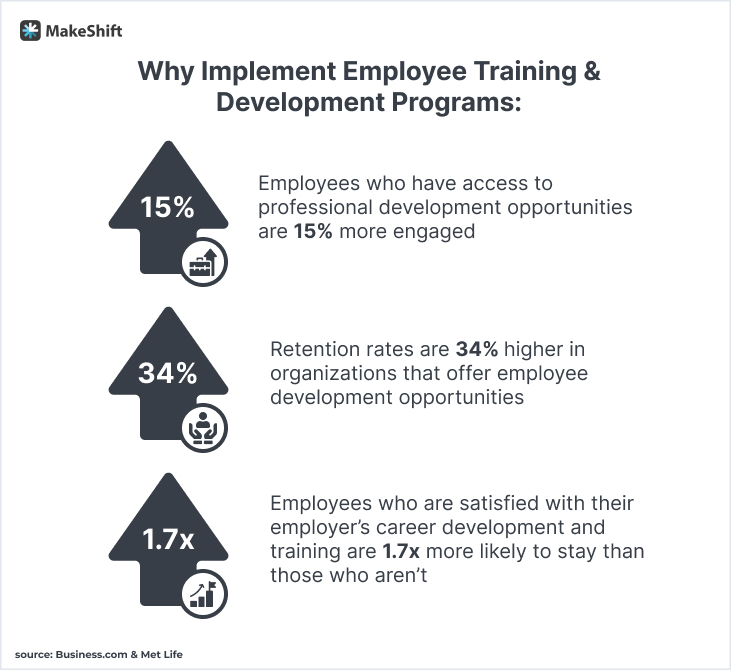
- Employees who have access to professional development opportunities are 15% more engaged.
- Retention rates are 34% higher among organizations that offer employee development opportunities.
- Employees who are satisfied with their employer’s career development and training are 1.7x more likely to stay than those who aren’t.
Implement a learning management system where employees can brush up on skills and learn new ones in an on-demand system. This gives them the flexibility to train when it works for them.
Offer incentives each quarter for your employees that have completed a set amount of training.
Step 3: Increase Team Communication
Increasing communication between managers and employees creates a more efficient and productive workforce — a primary goal of workforce optimization.
The stats speak for themselves.
Employees understand the importance of good communication.
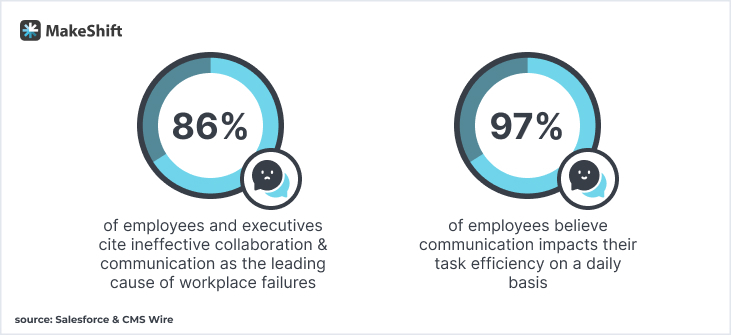
- 86% of employees and executives cite ineffective collaboration and communication as the leading cause of workplace failures.
- 97% of employees believe communication impacts their task efficiency on a daily basis.
Improve your communication with a team chat app and make mobile schedules and shift swapping available.
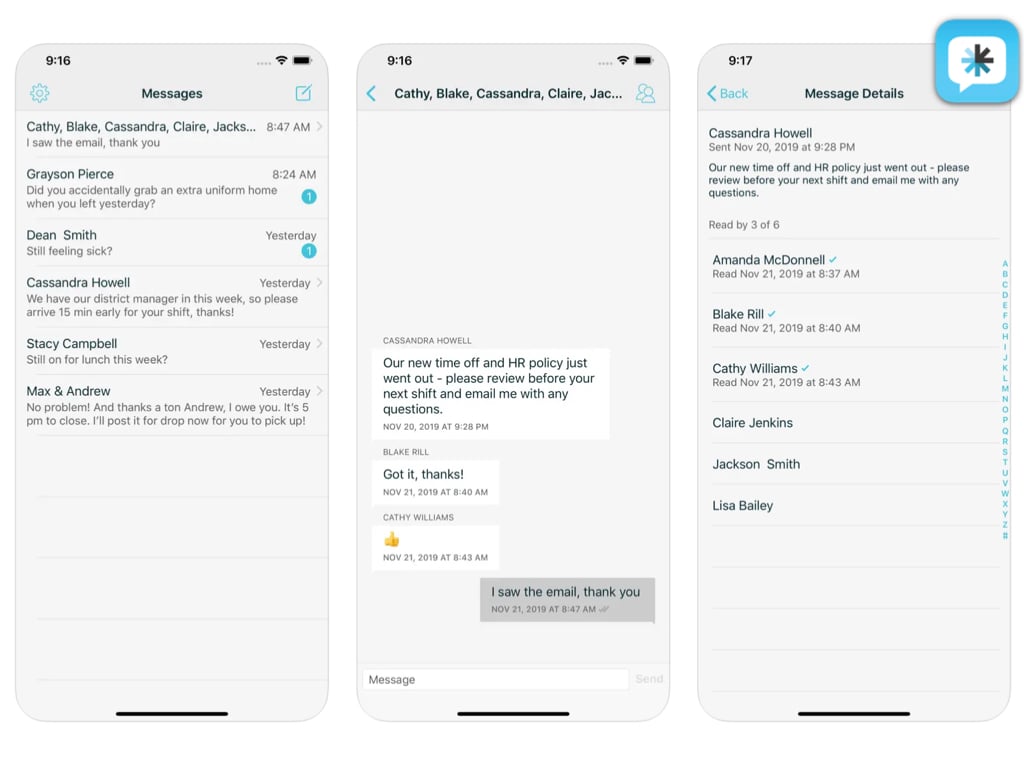
An app encourages team communication, and lets employees know you welcome their voice.
Step 4: Utilize Performance Measurement Tools
Performance measurement tools are essential to your business. They provide a method to accurately measure and track your business’ success and implement customized training based on your collected data.
These tools can analyze key performance indicators (KPIs) like sales, customer satisfaction, employee productivity, and operational efficiency.
Let your staff know this isn’t a “pass or fail” evaluation but a process to develop their skills and improve the overall operation.
4 types of effective business performance tools are:
- 360-Degree Feedback — A review method that provides each employee with performance feedback from their supervisor or manager and 4 to 8 peers, reporting staff members, coworkers, and, in some cases, customers.
- Balanced Scorecard — This method is used to measure a company’s performance in 4 areas: Financial, Customer Experience, Internal Processes, Learning & Growth. It provides a holistic view of your company’s performance, helping you identify areas for improvement or where your company is excelling.
- Management By Objective — With this method, managers and employees develop short and long-term goals for the year, then devise a plan to reach them. At year-end, the managers measure their employees’ achievements against these goals.
- Self Evaluation — This method allows the employee to rate themself using the same criteria used by their supervisor. A self-evaluation is about more than simply how YOU view your performance — it's also about seeing things from another point of view.
Step 5: Streamline Processes
Streamlining is a main ingredient in workforce optimization and is essential to stay competitive and profitable.
Streamlined processes are more efficient, cost-effective, and simpler than manual methods.
Streamlining processes can reduce operating costs, improve customer service, speed up time-to-market, and level up your employee experience.
Look for these ways to enhance workforce optimization through streamlining:
- Automate time-consuming manual processes through cutting edge tech.
- Improve interdepartmental communication with a chat app.
- Streamline schedule creation and management with staff scheduling software.
Implementing these 5 steps to improve your workforce optimization represents forward-thinking leadership that your employees will appreciate.
In fact, a whopping 76% of employees say their manager sets the tone of their workplace culture.
How Technology Can Improve Your Workforce Optimization
Today, tech is everything when you’re looking to optimize your workforce.
Although technology plays a vital role in WFO, remember to start with the desired outcome you want to achieve before you choose which technology to implement.
Consider technology that’ll help your employees do more with less effort. This frees up their time and energy for tasks requiring a human touch.
Cloud-based software allows managers and employees to work remotely and on the go, increasing flexibility in their work life.
Add MakeShift Scheduling Software To Your WFO Tech Stack
MakeShift Scheduling Software is a powerful tool that goes beyond typical scheduling software to help you implement or improve workforce optimization.
We believe in improving company culture with productivity tools to streamline scheduling tasks and give employees more say in their work life.
MakeShift Scheduling Software enables you to:
- Create & manage your employee schedules quickly and easily.
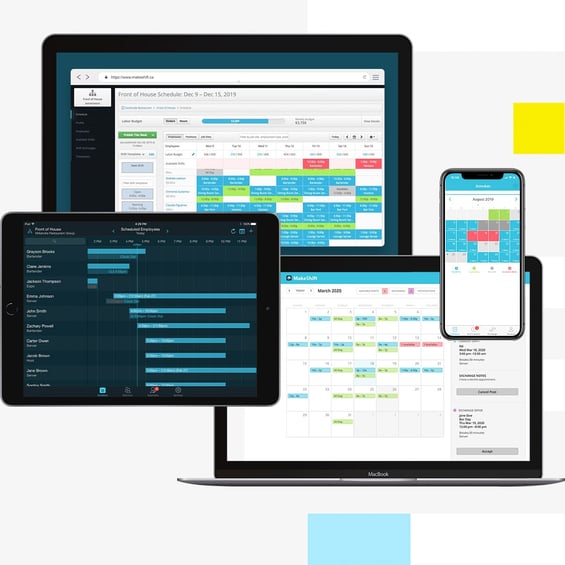
- Manage scheduling on the go.
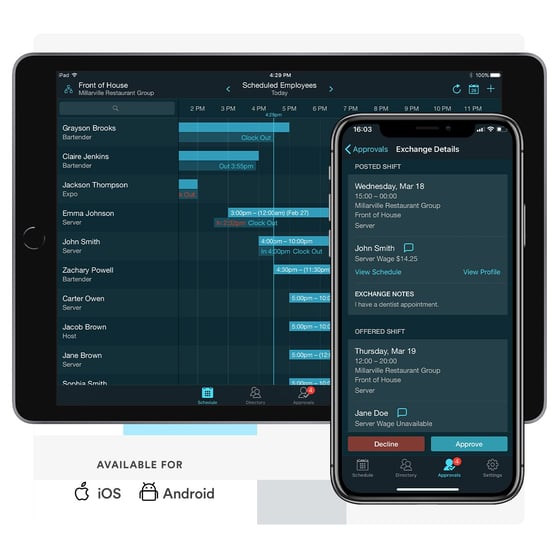
- View and edit employee availability (which your employees can set).
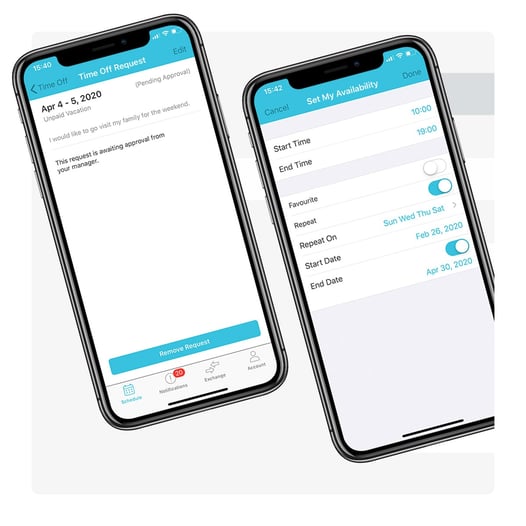
- Accurately track employee time by having your staff clock in and out for shifts and breaks.
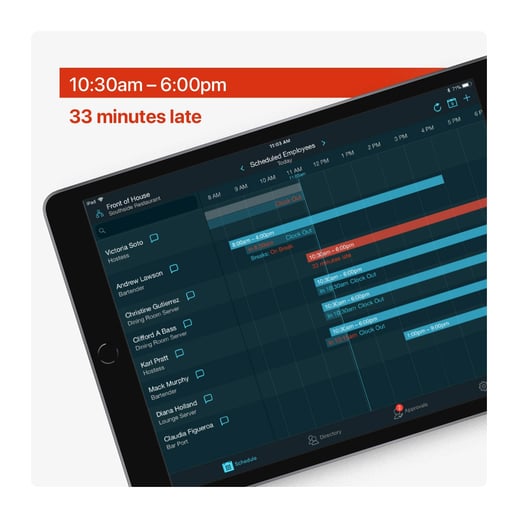
- Activate geofence-enabled clock-ins & photo punches.
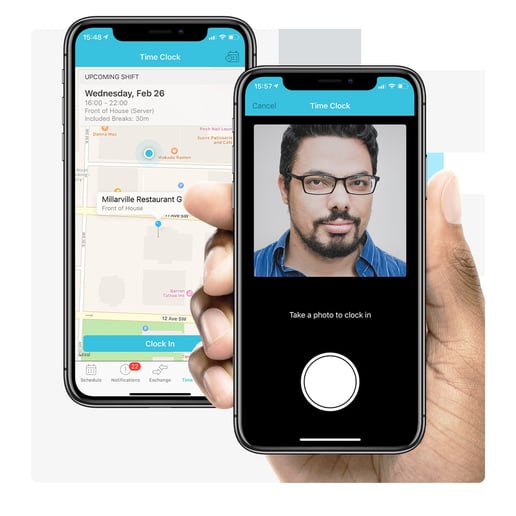
- Boost company culture through team communication with our chat app.
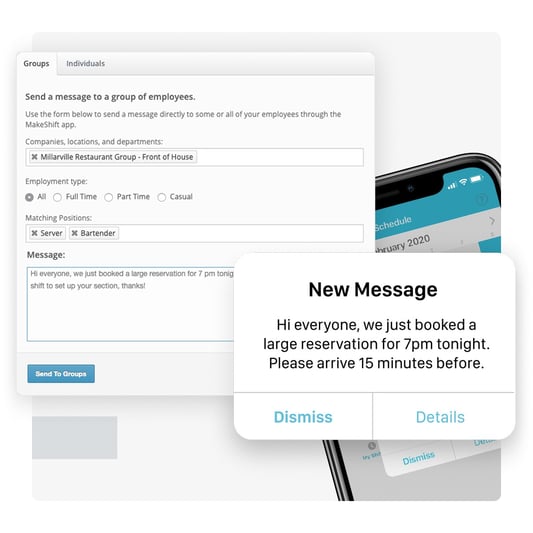
“Our company switched to MakeShift a year ago, and I wouldn't go back if you paid me a million dollars. Makeshift has made scheduling so much easier and quick! You can build out templates and schedule people out for months or even years. Employees love having their schedules at their fingertips, and the ease of trading shifts makes life easy.” — Ashley C., Operations Coordinator
Workforce Optimization Is Your Key To Success
Workforce optimization is critical to the success of your business.
Analyze your operation to determine where you need improvement, then get to work.
Streamline your processes and cut down on employee busy work that drains morale and kills productivity.
At Makeshift, we’re all about making the scheduling process easier and more streamlined. Ready to optimize your scheduling process?
Contact us today for a free demo.
Ready to Make the Shift?




